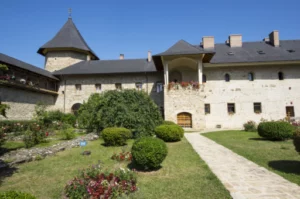San Antonio Spends Millions on Graffiti Removal: The Definition Dilemma
City Investment vs. Definition of Graffiti
In San Antonio, the fight against graffiti comes with a hefty price tag—over $1 million each year. This amount can sometimes be up to five times more than what neighboring Austin spends on similar issues. Last year alone, the city shelled out an astonishing $1.6 million to clean up what it classifies as graffiti, which, interestingly, encompasses a much broader category than one might expect.
The Wide Spectrum of Graffiti
So, what exactly qualifies as graffiti in San Antonio? The city’s definition has sparked debate, especially when it pertains to forms of expression like chalk art. Artists, like Joshua Hinson, have found themselves facing citations for utilizing washable chalk in public spaces, something many feel should not be criminalized.
The Artist’s Perspective
Hinson, known for his vibrant chalk murals, has encountered more significant pushback in San Antonio compared to other cities. “I feel like the response from the people is more positive here,” he explains. However, he shares a stark contrast regarding law enforcement’s approach, noting that in Austin, police tend to support his artistic endeavors instead of cracking down on them.
Chalk: Art or Crime?
“The way the graffiti code is written makes it so that any washable chalk, even on public streets and sidewalks, is a citable or arrestable offense,” says Jalen McKee Rodriguez, a local councilman. He argues that this not only excessively criminalizes innocent fun but also targets young people and creative communities.
Data Backing Artistic Expression
Research suggests colorful murals, such as Hinson’s chalk work, can significantly deter traditional graffiti vandalism. “It shows the neighborhood is safer because in order to put art out here, it has to be a little bit safe,” he adds, highlighting the community-building aspect of public art.
Community Support and Challenges
Despite the challenges in San Antonio, Hinson reflects on his experiences in areas like Leon Valley, where he was previously arrested for chalk art but later vindicated in a wrongful arrest case. He expresses a sense of safety and support from the community in areas that have embraced public art over punitive measures.
The Future of Graffiti Ordinances
Councilman Rodriguez mentions his disappointment in the lack of support from his fellow council members on revising the ordinance. Nevertheless, he remains hopeful that future discussions will focus on rethinking what constitutes graffiti and perhaps pave the way for art forms like chalk to be celebrated rather than punished.
Conclusion: A Call for Change
As cities like San Antonio navigate the complexities of graffiti removal, there is an ongoing conversation about the importance of distinguishing between genuine vandalism and art meant to uplift communities. The challenge lies not only in cleaning up but in reshaping perspectives around creativity and expression in public spaces.








